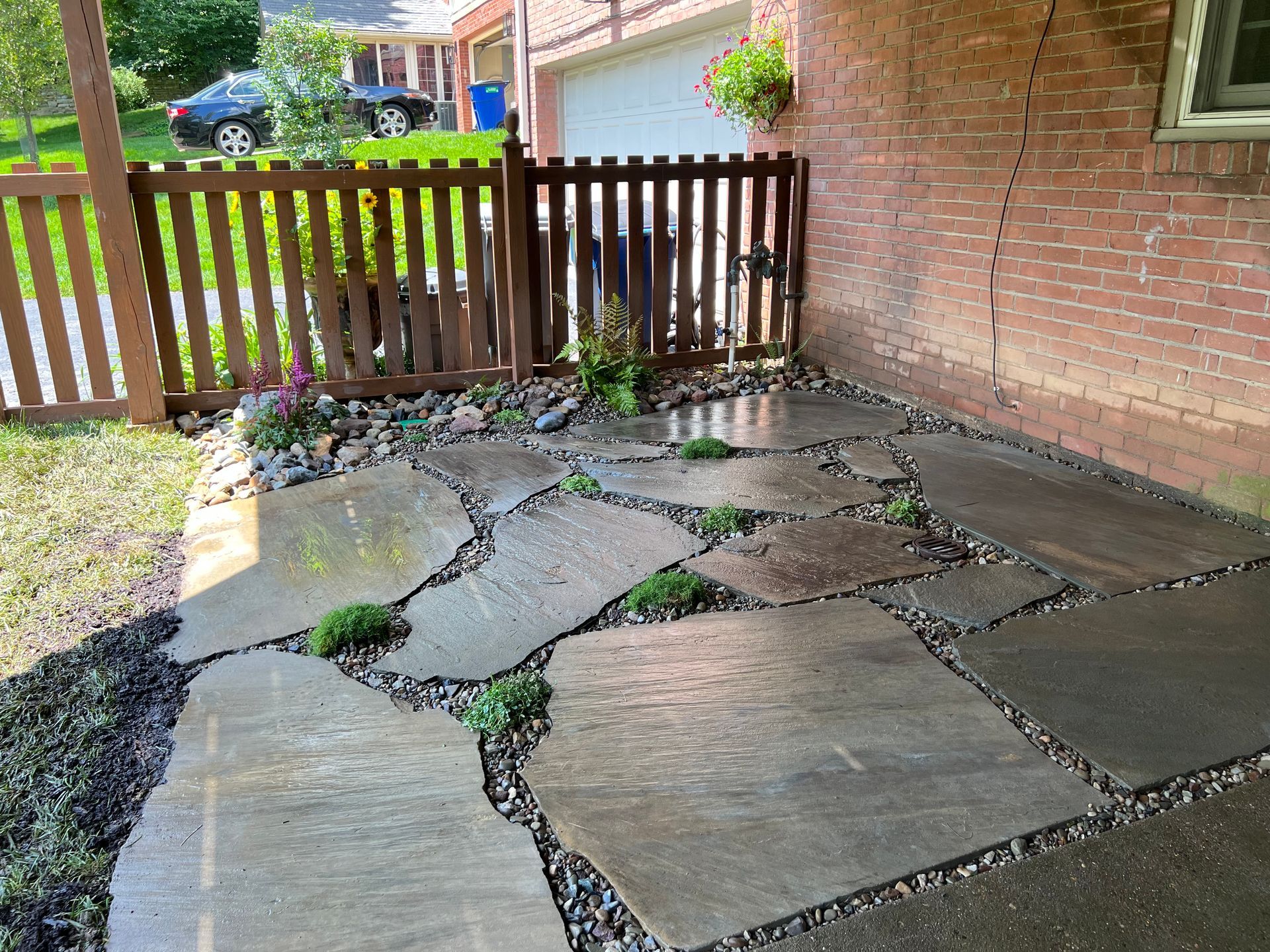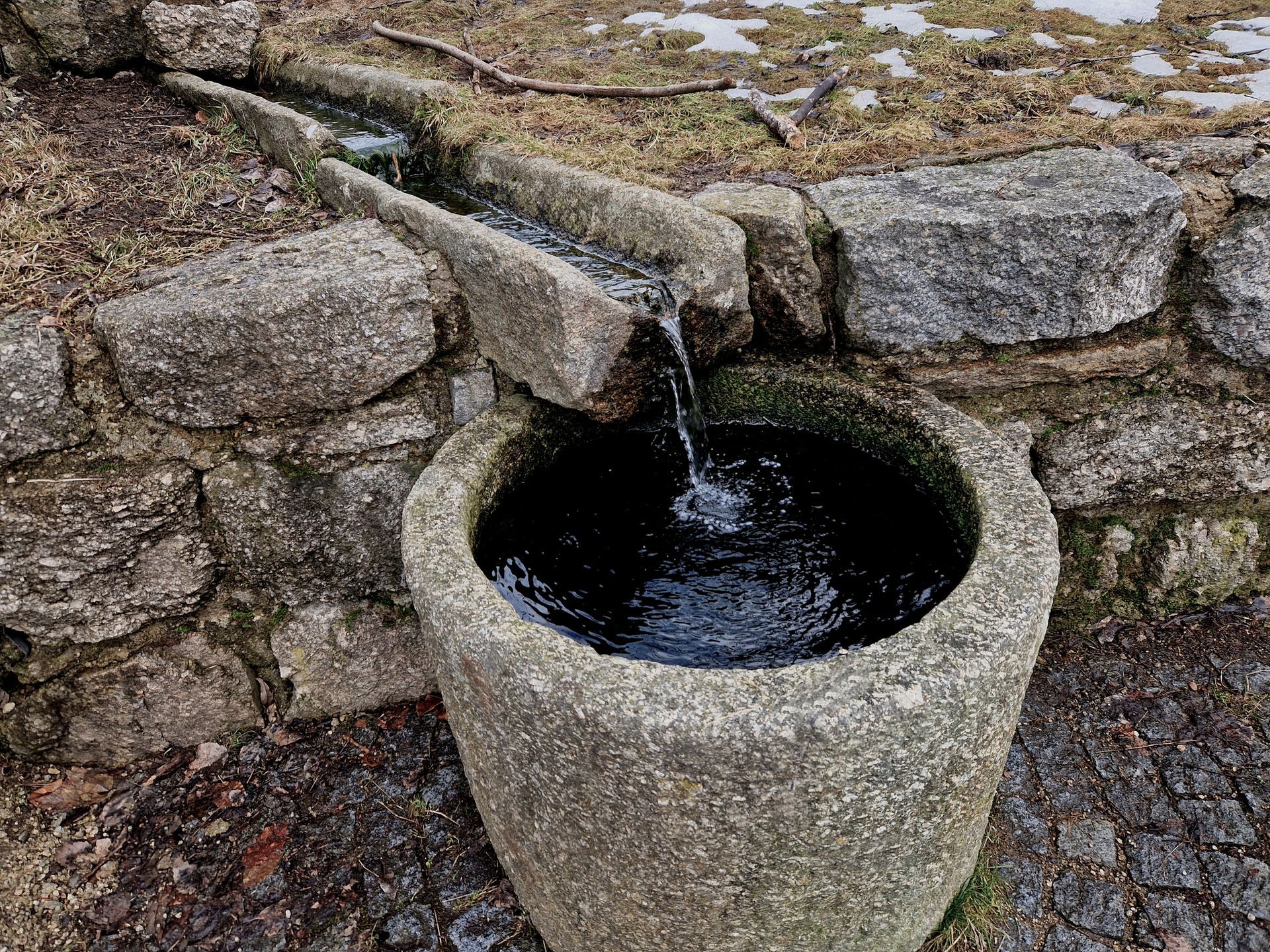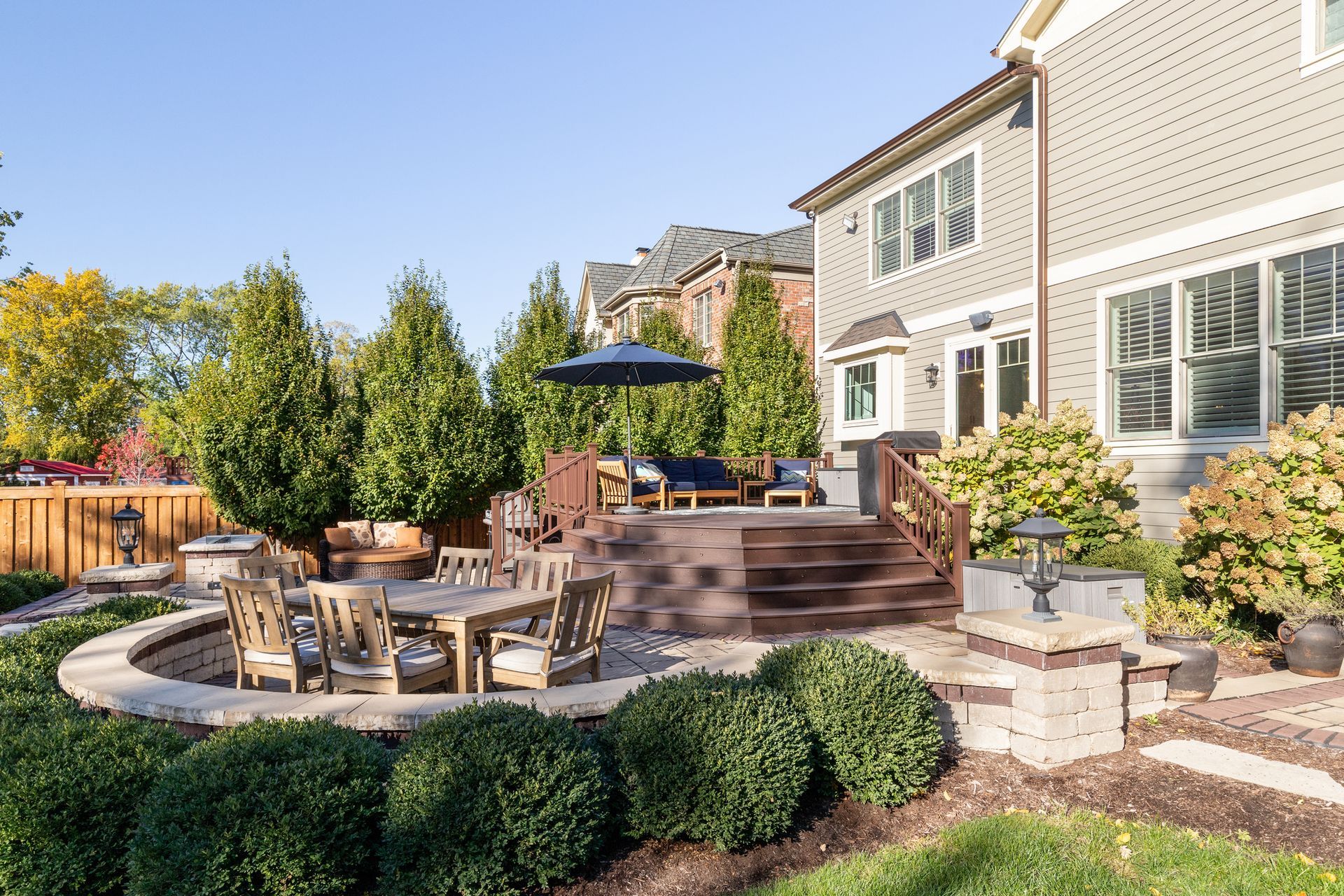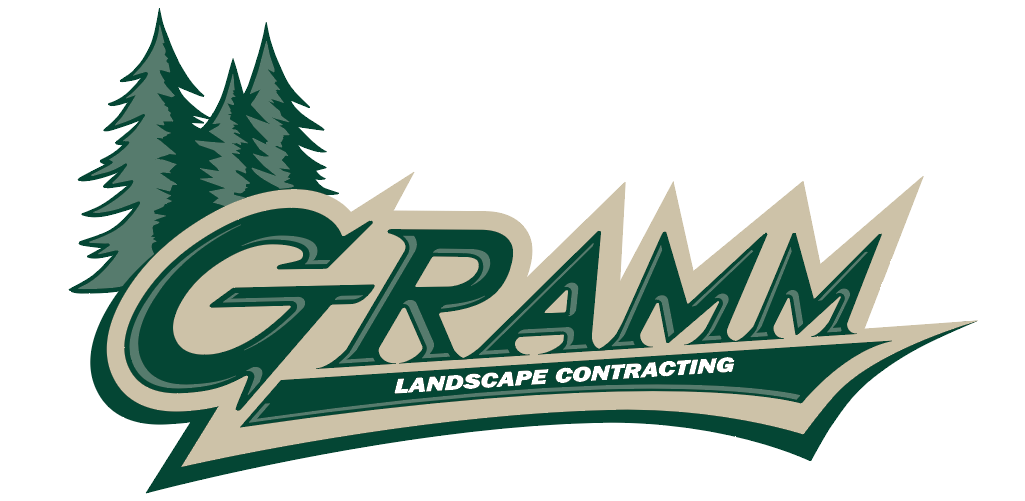Inspiration For Your Next Hardscape Project
Creating an inviting outdoor space is not just about selecting the right plants or maintaining a lush lawn. Hardscaping—the addition of non-living elements like stone walls, paved areas, and other structures—is a central piece of landscape design that can dramatically transform the look and feel of your Pittsburgh home.
Given the area's unique climate and terrain, choosing the right
hardscape features can also dictate the durability and functionality of your outdoor living spaces.
Understanding Hardscaping and Its Importance
Hardscaping is an often underrated aspect of landscaping that plays a critical role in the aesthetic appeal and usability of your outdoor area. Whether it's a cozy patio for family barbecues, a meandering pathway through your garden, or a sturdy retaining wall, hardscaping elements provide structure and definition to your landscape. Beyond their practical use, these features can also add significant value to your home.
Pittsburgh's Climate and Terrain: A Primer for Hardscaping
Pittsburgh's climate, characterized by humid summers and cold, snowy winters, along with its varied terrain, poses specific challenges and opportunities for landscaping. The region's freeze-thaw cycles necessitate the choice of durable materials and thoughtful drainage solutions in hardscape designs to prevent cracking and shifting.
The rolling hills typical of the area also make retaining walls and terracing popular choices among homeowners for managing slopes and creating usable flat areas.
Popular Hardscape Types in Pittsburgh
Patio Designs
Patios are a staple of Pittsburgh outdoor living, offering a versatile space for relaxation and entertainment. Materials like flagstone, pavers, and concrete are popular choices, known for their resilience against weather extremes and their ability to complement a wide range of home styles.
The addition of features like outdoor kitchens, fire pits, and seating areas can make your patio the perfect gathering spot for friends and family.
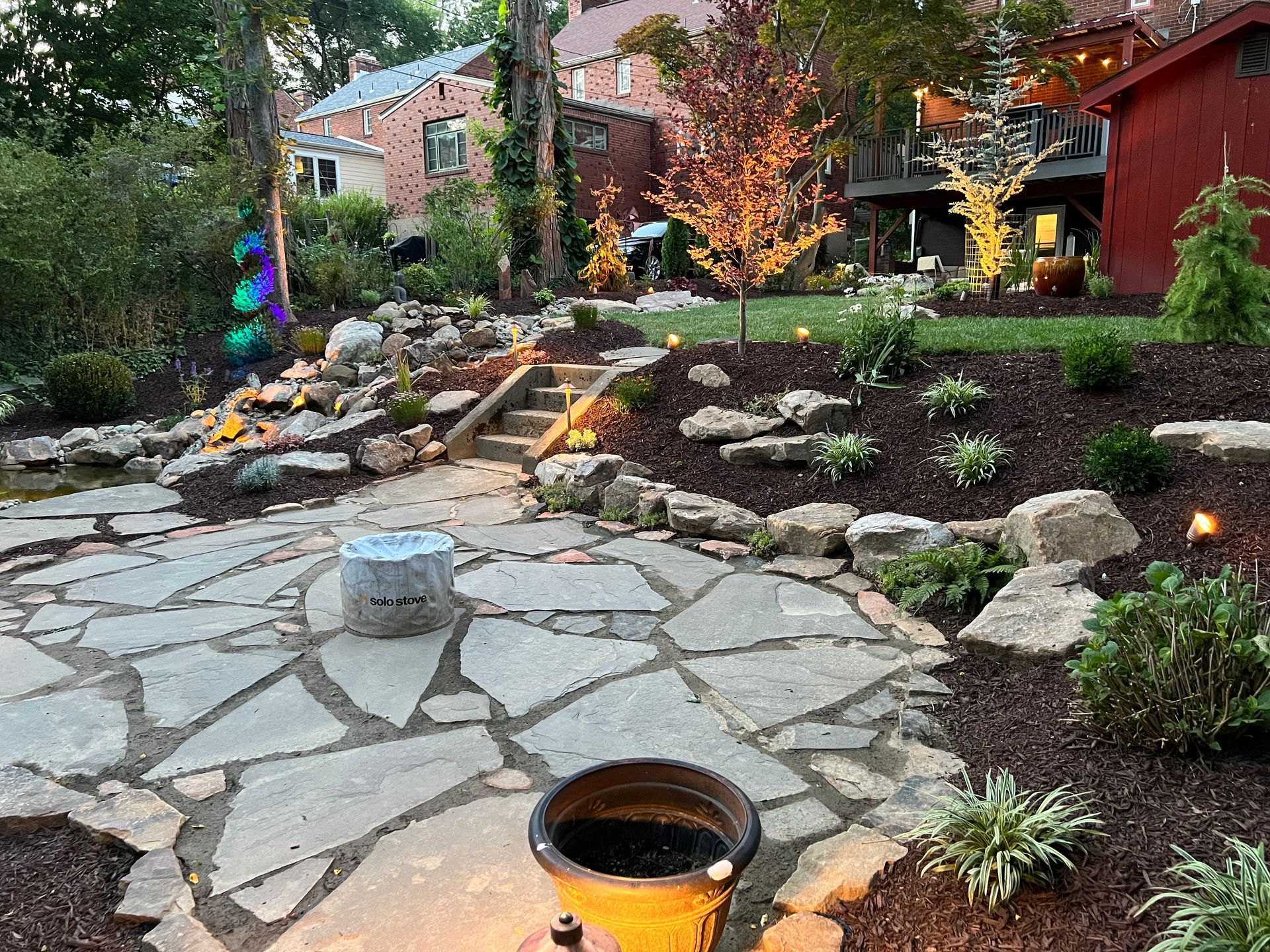
Walkways and Pathways
Functional yet decorative, walkways and pathways guide movement throughout your yard, connecting different areas while adding visual interest. Gravel, crushed stone, and pavers are frequently used materials that blend well with Pittsburgh's natural landscape. Incorporating curves, steps, and landscaping elements like plants and lighting can add a touch of character to your pathways.
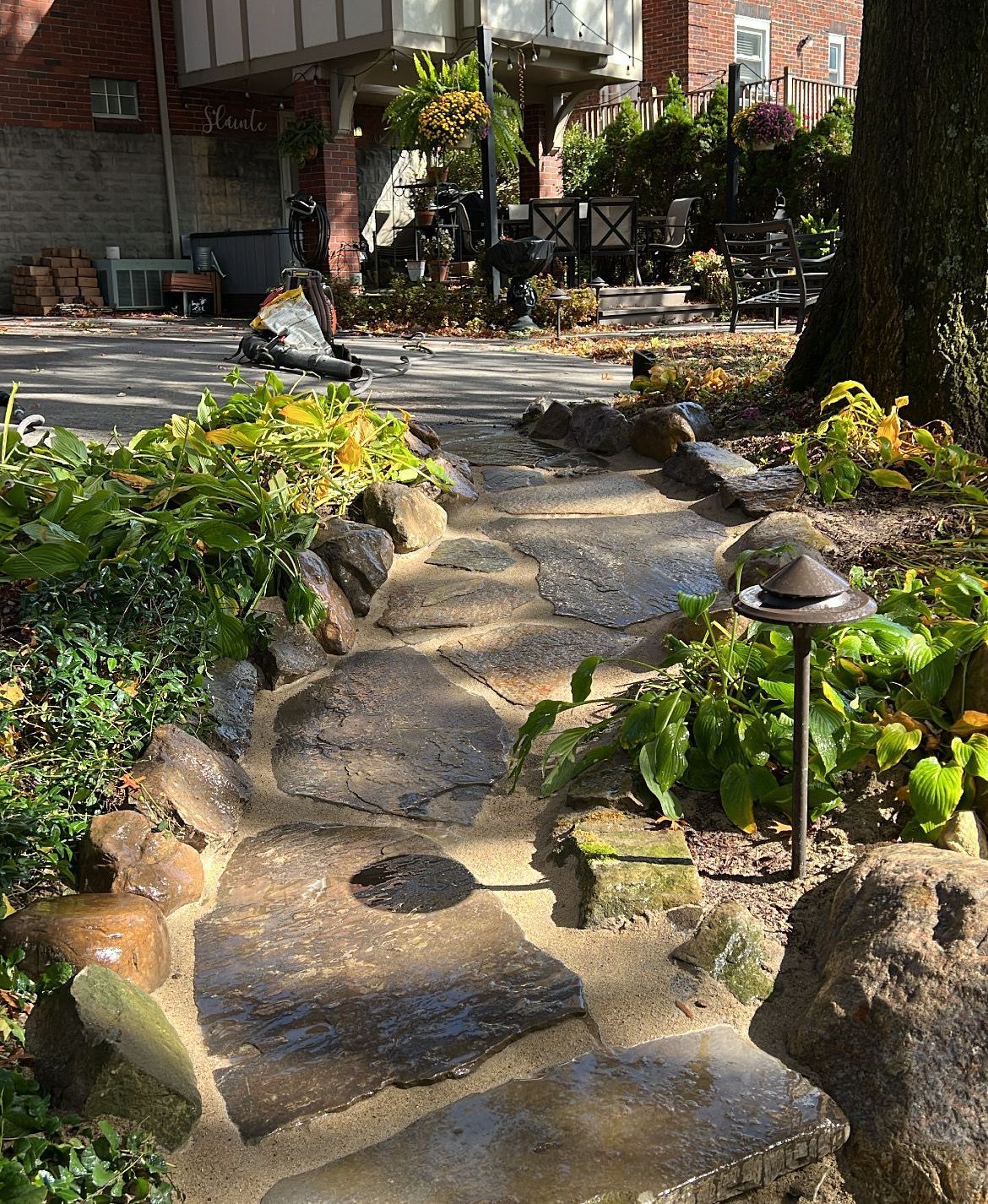
Stairs
Pittsburgh's hilly landscape often requires the integration of stairs and retaining walls in hardscape designs. Adding stairs to your landscape not only provides safe and convenient access to different levels but also adds a unique element of design. Stone, brick, or concrete are popular materials for stairs and can be customized to suit your desired look.
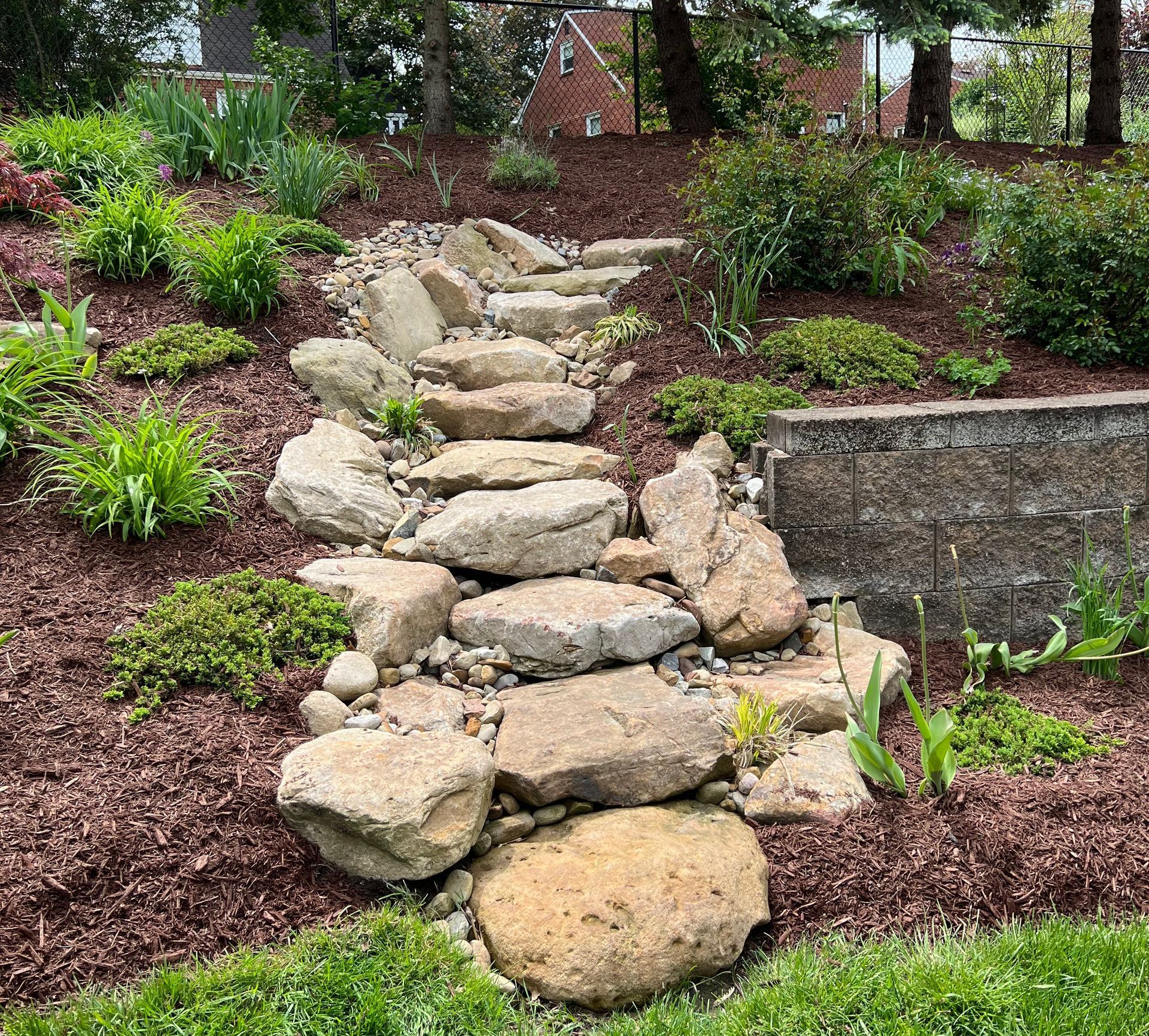
Retaining Walls
Vital for erosion control in sloped areas, retaining walls also provide a chance to introduce layers and terraces in your garden. Using materials such as concrete blocks or natural stone can add texture and stability to your landscape design. Choosing the right type of retaining wall will depend on factors like soil conditions, drainage needs, and the desired aesthetic.
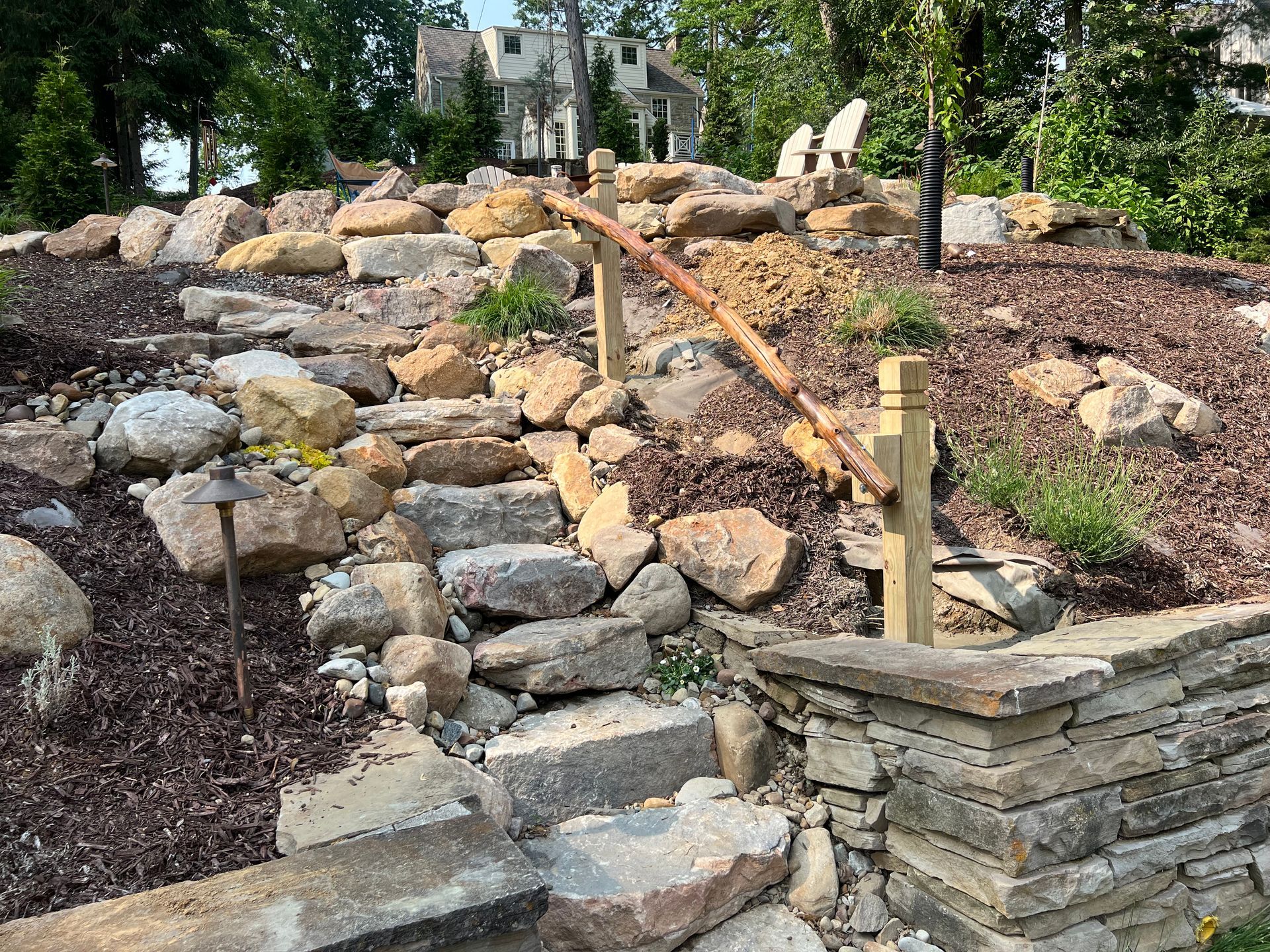
Firepits and Outdoor Fireplaces
A favorite feature for many Pittsburgh homeowners, firepits and outdoor fireplaces serve as a warm focal point for gatherings. These features extend your outdoor space's usability into the cooler months and create a cozy, inviting atmosphere. From traditional stone firepits to modern gas-fueled designs, there are endless options to fit your style and needs.
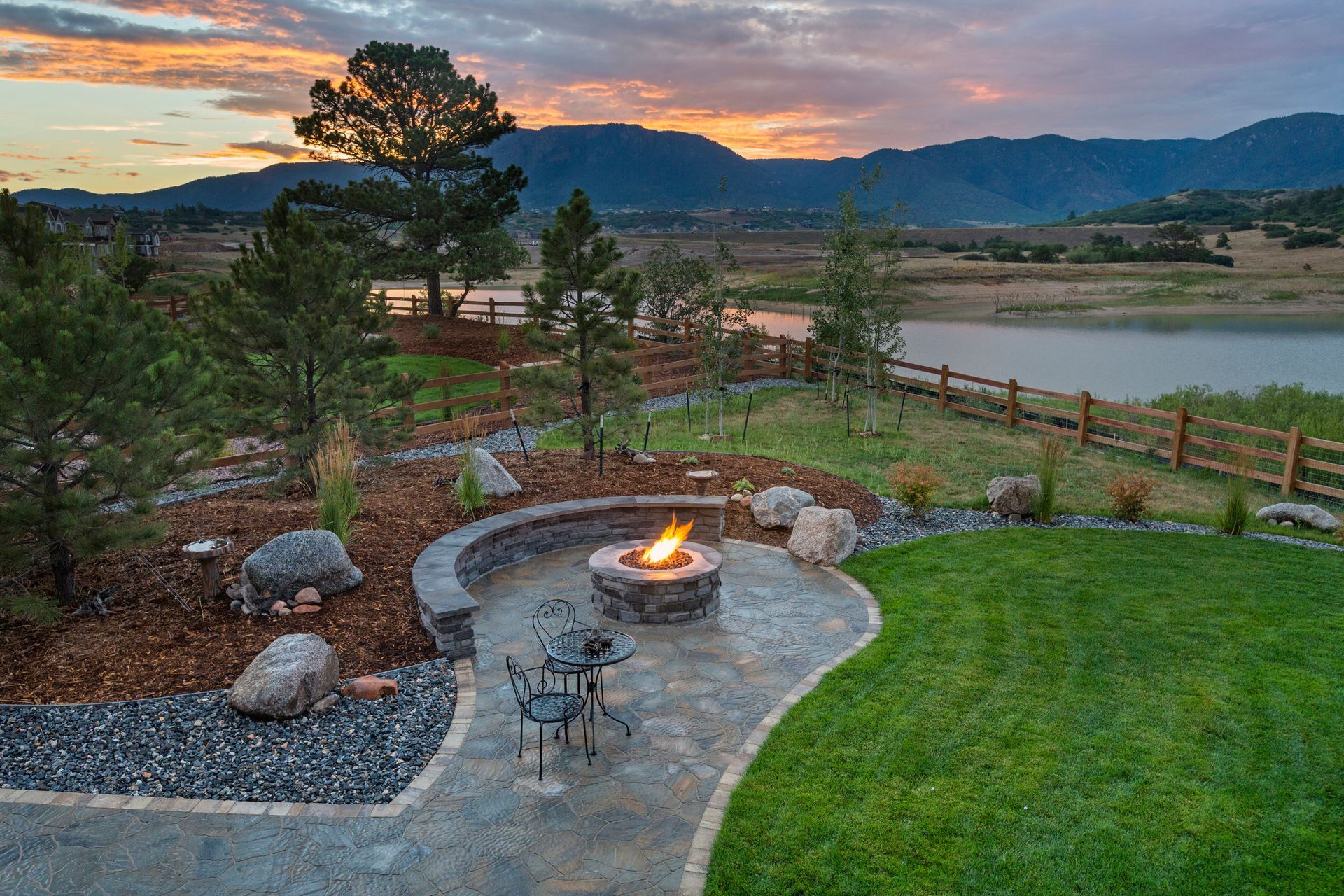
Choosing the Right Hardscape for Your Home
Selecting the ideal hardscape for your space involves considering your home's existing aesthetic, your personal style, and practical factors like budget, space, and maintenance requirements. Assessing the intended use of each area and how it flows with the rest of your landscape can help inform your decisions.
Consulting with a hardscaping professional can also provide valuable insights and ensure the longevity and success of your hardscape project. Remember, the goal is to create a cohesive outdoor environment that meets your needs and desires.
Can I Install a Hardscape Project Myself?
While some hardscape projects can be DIY-friendly, it's important to evaluate your skill level and the complexity of the project before taking it on yourself. Small-scale features like firepits or garden pathways can often be tackled with proper research and preparation. However, larger projects like patios or retaining walls may require professional expertise to ensure safety, functionality, and longevity.
When you attempt these types of projects without proper materials, equipment, or knowledge, you risk wasting time and money and potentially causing damage to your property. Always consider the potential risks before taking on a hardscape project yourself.
Finding the Best Hardscape Contractor in Pittsburgh
Your choice of hardscape contractor can significantly affect the success of your hardscaping project. Look for a company like Gramm Outdoor Contracting with a consistent track record of quality work in Pittsburgh. Our comprehensive services, attention to detail, and deep understanding of the local climate and materials are key qualities to seek in a hardscaping partner.
When vetting potential contractors, consider asking for:
- Examples of previous projects in the area
- Testimonials or references from past clients
- An outline of their process, from design to completion
- Information on warranties or guarantees for their work
Choosing a contractor that aligns with your vision and understands the intricacies of Pittsburgh's landscape will ensure a smooth process and a stunning outcome. Gramm Outdoor Contracting takes pride in our ability to deliver beautiful and functional hardscaping services that Pittsburgh homeowners can enjoy for years to come.
Transform Your Landscape with Gramm Outdoor Contracting!
Hardscaping is a powerful tool for transforming your outdoor space into a functional, beautiful feature of your home. In Pittsburgh, with its distinctive climate and terrain, selecting the right hardscape features and materials is paramount.
Working with a reputable contractor like Gramm Outdoor Contracting can guide you through the maze of options to achieve an outdoor space that not only looks incredible but also enhances your lifestyle and the value of your property.
Take the first step towards a stunning outdoor space today and experience the difference that professional hardscaping services can make. Contact us today to get started!

Author: Jake Gramm
Owner & Founder of Gramm Outdoor Contracting, Jake leads crew of experts in hardscaping and landscaping installations providing top notch work to the Pittsburgh area.
You might also like
